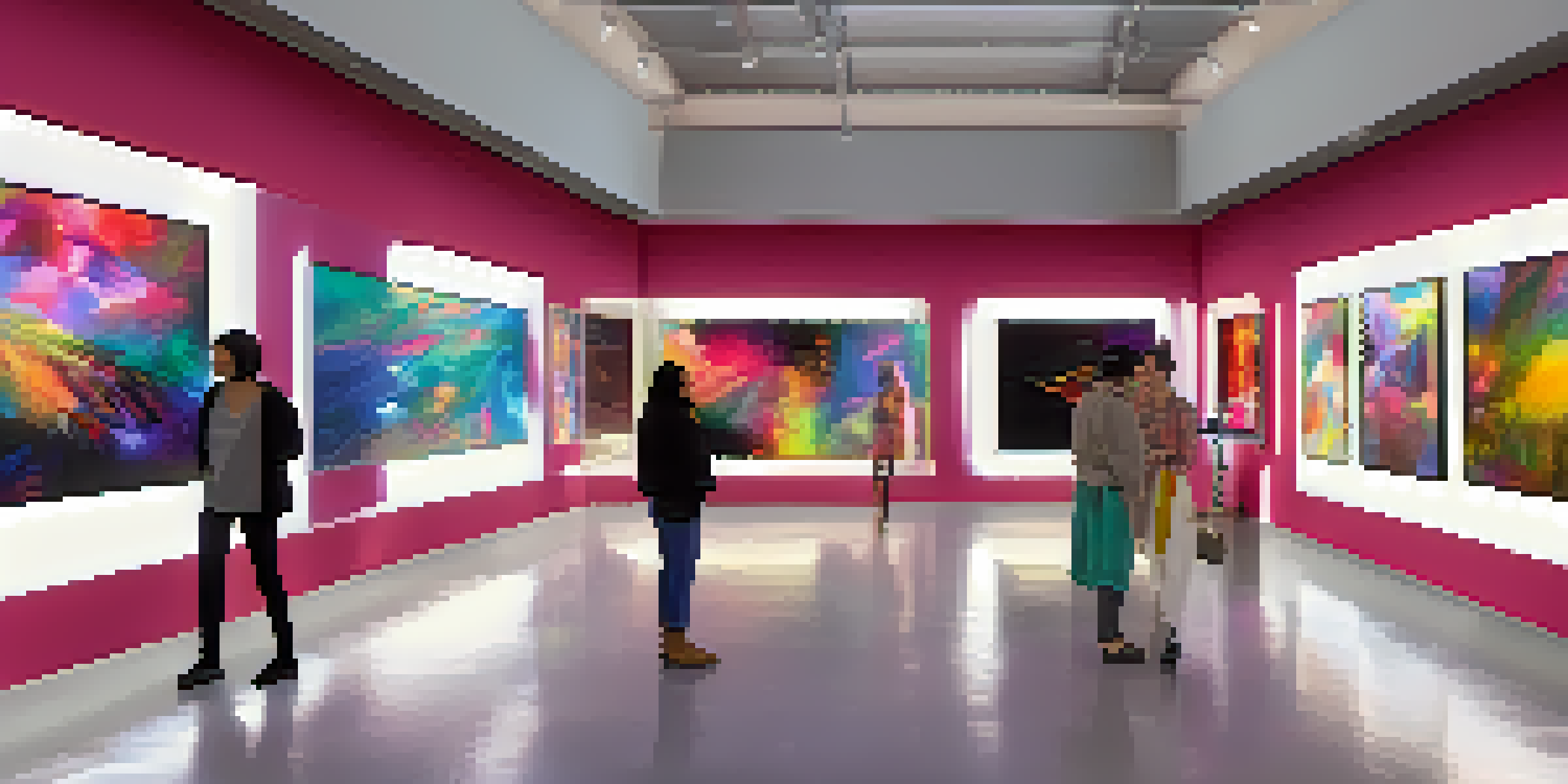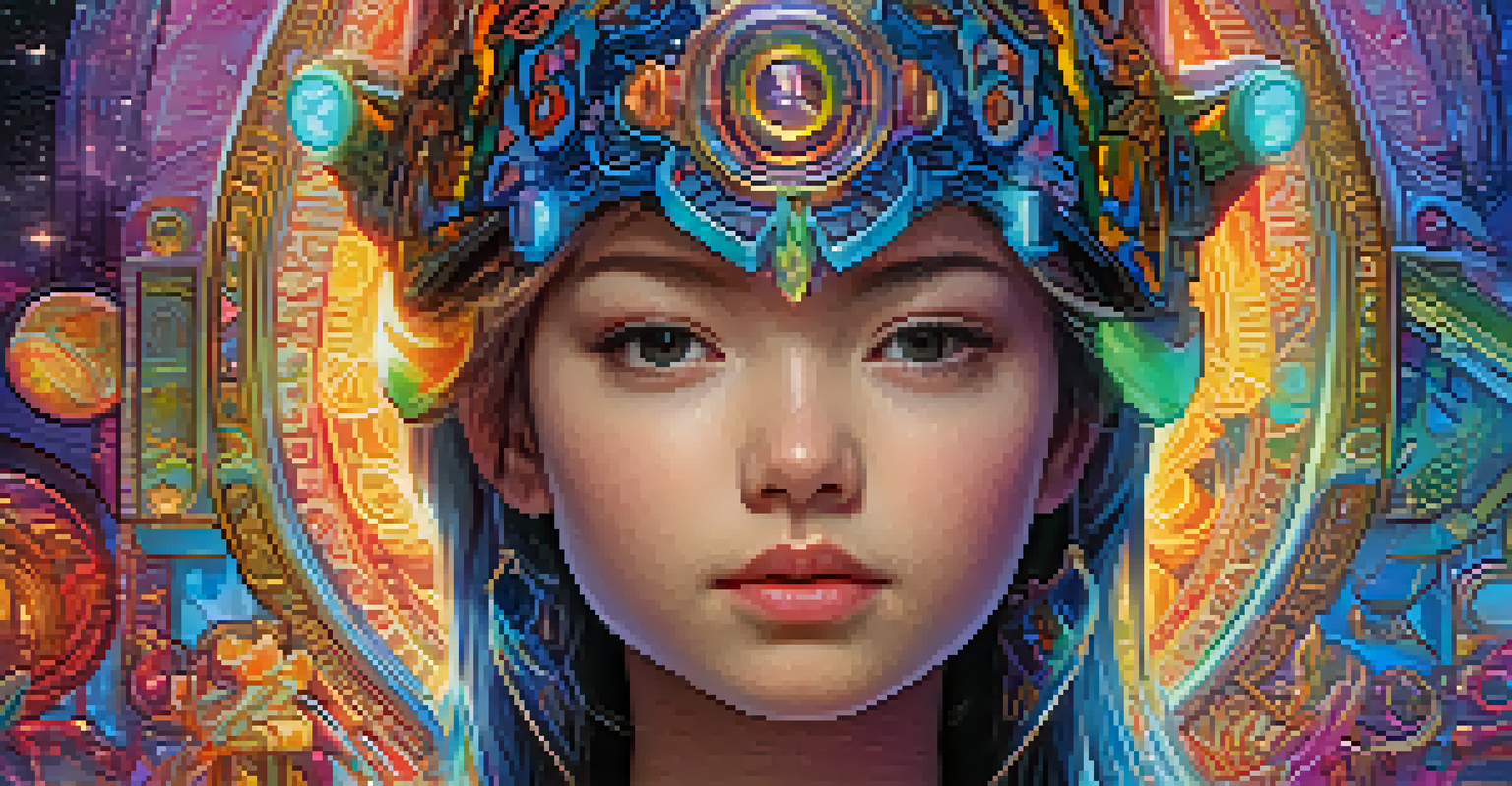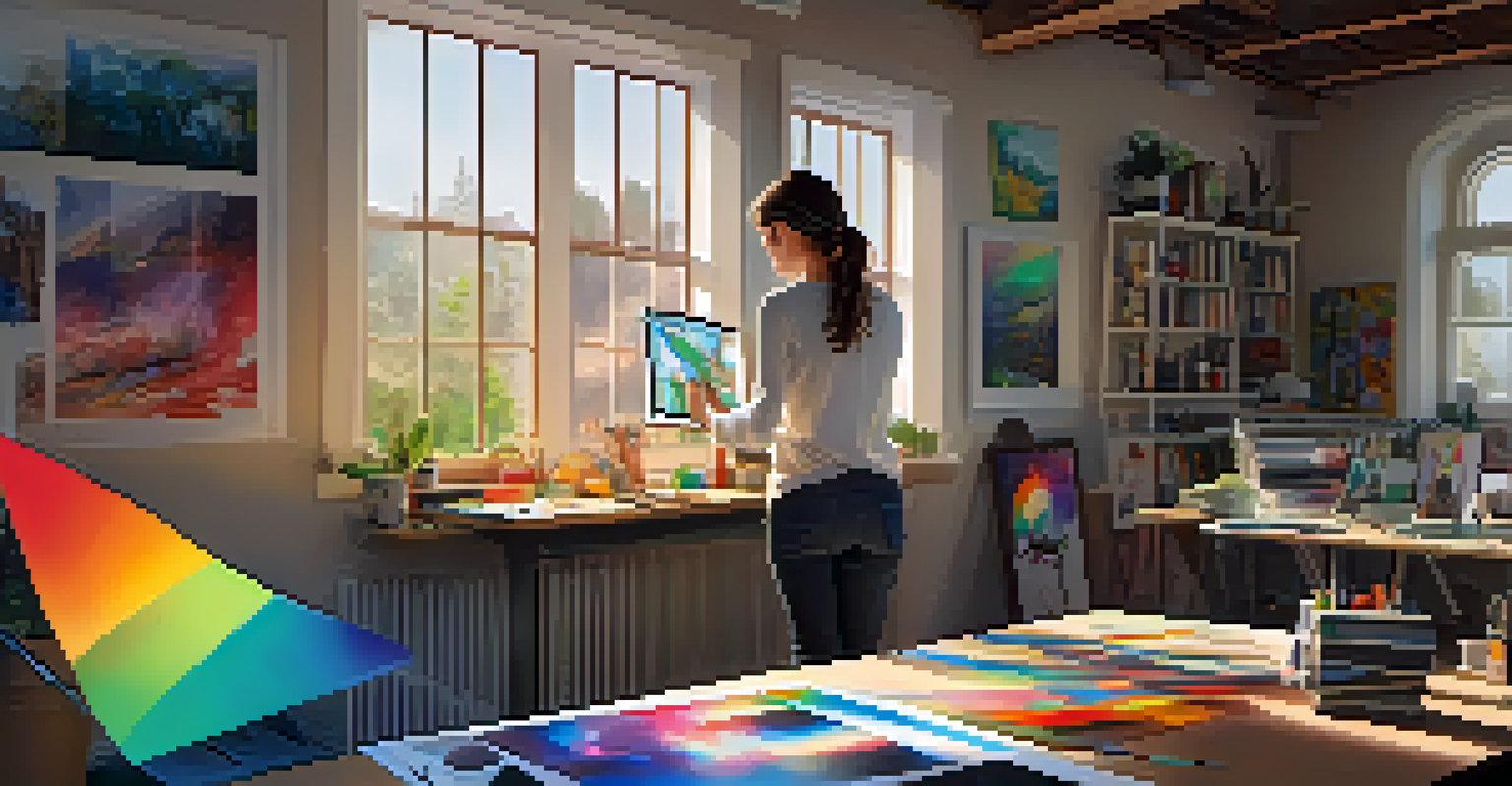NFT Marketplaces and Digital Collectibles: A New Era Unfolds

Understanding NFTs: What Are They and Why Do They Matter?
At their core, NFTs, or Non-Fungible Tokens, are unique digital assets that represent ownership of a specific item or piece of content. Unlike cryptocurrencies such as Bitcoin, which are interchangeable, each NFT has distinct properties and values. This uniqueness is what makes NFTs so appealing to artists, collectors, and investors alike, creating a new marketplace for digital ownership.
NFTs are a revolutionary technology that brings digital ownership and authenticity to a whole new level.
The importance of NFTs lies in their ability to authenticate and prove ownership of digital items, whether they are art, music, or even virtual real estate. Imagine a digital painting that you can prove is the original, much like owning a famous piece of art in a gallery. This verification process transforms the way we perceive value in the digital realm, creating a sense of scarcity and exclusivity.
As the digital world continues to expand, NFTs are becoming a vital part of the conversation around digital rights and ownership. They empower creators to monetize their work in ways that were previously unimaginable, allowing them to reach a global audience while retaining control over their intellectual property.
The Rise of NFT Marketplaces: Where Collectibles Come to Life
NFT marketplaces are online platforms that facilitate the buying, selling, and trading of NFTs. Some of the most popular marketplaces include OpenSea, Rarible, and Foundation, each offering unique features for users. These platforms act as digital galleries where artists can showcase their work and collectors can find rare items, all in one place.

The user experience on these marketplaces is designed to be accessible, even for those new to the world of NFTs. With just a few clicks, you can browse through thousands of digital collectibles, learn about their history, and make purchases using cryptocurrency. This ease of access has contributed to the explosive growth of the NFT market, attracting individuals from various backgrounds and interests.
NFTs Enable Unique Digital Ownership
NFTs, or Non-Fungible Tokens, provide a way to authenticate and prove ownership of digital assets, revolutionizing how we perceive value in the digital world.
Moreover, NFT marketplaces often incorporate community-driven elements, like auctions and social features, which enhance engagement among users. This creates an environment where collectors and creators can connect, fostering a sense of community and collaboration that is crucial for the ecosystem's growth.
Digital Collectibles: The New Frontier of Collecting
Digital collectibles, ranging from virtual trading cards to digital art, are at the heart of the NFT boom. They offer a modern twist on traditional collecting, allowing enthusiasts to own a piece of the digital world. Just like collecting baseball cards or stamps, digital collectibles provide a thrill of ownership, but with the added benefits of easy storage and global accessibility.
The future of art will be digital, and NFTs are the key to unlocking its potential.
One of the most exciting aspects of digital collectibles is their potential for interactivity and innovation. For instance, virtual pets can evolve based on user interactions, and digital artworks can change appearance over time. This dynamic nature of collectibles enhances the experience for collectors, making each piece more than just a static item but a living part of their digital identity.
As digital collectibles gain popularity, they also challenge traditional notions of value and ownership. This new era invites us to rethink what it means to collect and how we value creativity in the digital landscape, opening doors for future innovations in the realm of collectibles.
The Role of Artists and Creators in the NFT Space
Artists and creators are at the forefront of the NFT revolution, utilizing these digital assets to showcase their work and connect with audiences. By minting their creations as NFTs, they can sell directly to collectors, bypassing traditional galleries and middlemen. This shift not only empowers artists but also allows them to retain a larger portion of the profits from their work.
Moreover, NFTs provide artists with innovative ways to engage with their fans. For example, some artists offer exclusive content or experiences to NFT holders, creating a deeper connection with their audience. This engagement not only enhances the value of the collectible but also builds a loyal community around the artist’s brand.
Artists Gain Control Over Their Work
By utilizing NFTs, artists can sell directly to collectors, bypassing traditional channels and retaining more profits while engaging their audience in innovative ways.
However, the NFT space is not without its challenges. Artists must navigate concerns about copyright, environmental impact, and market volatility. As the industry matures, it will be crucial for artists to advocate for their rights and for marketplaces to implement fair practices that support creators.
The Environmental Impact of NFTs: A Growing Concern
While NFTs offer new opportunities, they have also raised environmental concerns due to the energy-intensive processes involved in minting and trading them. Most NFTs are built on blockchain networks like Ethereum, which require significant computational power, leading to high carbon footprints. This has sparked a debate about the sustainability of the NFT market and its long-term viability.
To address these concerns, some NFT platforms are exploring eco-friendly alternatives, such as using proof-of-stake mechanisms instead of proof-of-work. These alternatives consume far less energy and can significantly reduce the environmental impact of digital collectibles. As awareness grows, many artists and collectors are prioritizing eco-conscious choices when engaging with NFTs.
Ultimately, the conversation around the environmental implications of NFTs highlights the need for balance between innovation and responsibility. As the market evolves, it's essential for stakeholders to embrace sustainable practices that protect the planet while still fostering creativity and economic growth.
The Future of NFTs: Trends to Watch
As the NFT market continues to expand, several trends are emerging that could shape its future. One notable trend is the integration of augmented reality (AR) and virtual reality (VR) with NFTs, allowing collectors to experience digital art and collectibles in immersive ways. Imagine walking through a virtual gallery filled with 3D sculptures that you can interact with—this is the future many creators are envisioning.
Another trend is the rise of utility-based NFTs, which provide additional benefits beyond ownership. For example, some NFTs grant access to exclusive events or digital spaces, enhancing their value and appeal. This shift towards utility can attract a broader audience, encouraging more people to explore the NFT space.
Environmental Concerns of NFTs
The energy-intensive processes of minting and trading NFTs have raised environmental concerns, prompting efforts to adopt more sustainable practices within the industry.
Finally, as regulations around digital assets evolve, we can expect a more structured environment for NFT transactions. This could lead to increased trust and security for collectors and investors, fostering a more sustainable and robust marketplace. The future of NFTs is bright, and it promises to be an exciting journey for all involved.
Navigating the NFT Landscape: Tips for Collectors
For those looking to dive into the world of NFTs, navigating this new landscape can be daunting. The first step is to educate yourself about the basics of NFTs and familiarize yourself with different marketplaces. Understanding how to buy, sell, and store NFTs is crucial for a successful collecting experience, as is knowing the importance of due diligence when assessing the value of a piece.
Additionally, it's wise to start with smaller investments as you explore your interests within the NFT space. Much like traditional collecting, patience is key; take your time to discover what resonates with you and what you're passionate about. Engaging with the community through social media and forums can also provide valuable insights and recommendations.

Lastly, always keep an eye on market trends and emerging technologies. The NFT landscape is ever-changing, and staying informed will help you make educated decisions as a collector. By approaching NFTs with curiosity and caution, you can enjoy the thrill of collecting while minimizing risks.